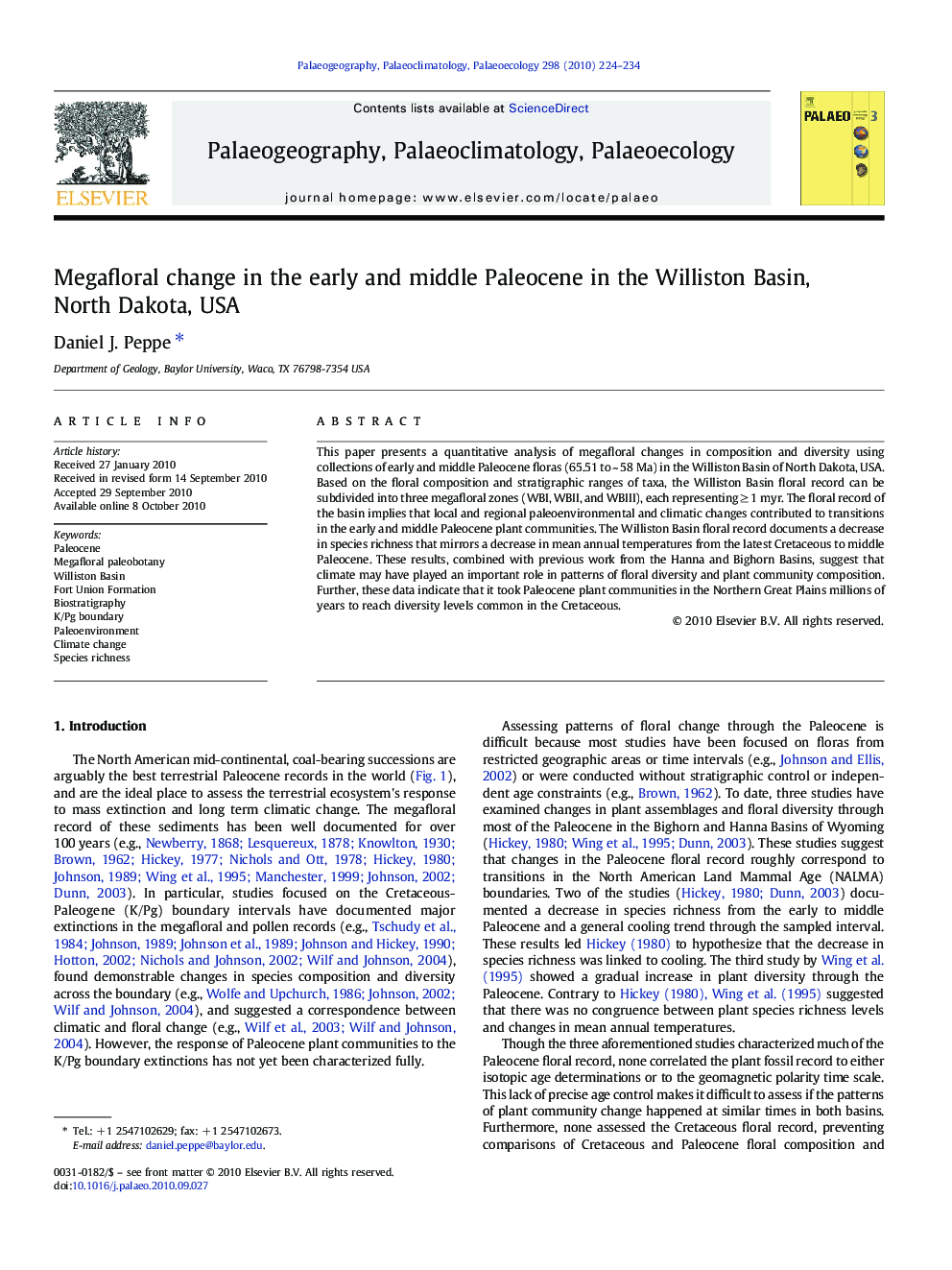| Article ID | Journal | Published Year | Pages | File Type |
|---|---|---|---|---|
| 4467415 | Palaeogeography, Palaeoclimatology, Palaeoecology | 2010 | 11 Pages |
This paper presents a quantitative analysis of megafloral changes in composition and diversity using collections of early and middle Paleocene floras (65.51 to ~ 58 Ma) in the Williston Basin of North Dakota, USA. Based on the floral composition and stratigraphic ranges of taxa, the Williston Basin floral record can be subdivided into three megafloral zones (WBI, WBII, and WBIII), each representing ≥ 1 myr. The floral record of the basin implies that local and regional paleoenvironmental and climatic changes contributed to transitions in the early and middle Paleocene plant communities. The Williston Basin floral record documents a decrease in species richness that mirrors a decrease in mean annual temperatures from the latest Cretaceous to middle Paleocene. These results, combined with previous work from the Hanna and Bighorn Basins, suggest that climate may have played an important role in patterns of floral diversity and plant community composition. Further, these data indicate that it took Paleocene plant communities in the Northern Great Plains millions of years to reach diversity levels common in the Cretaceous.
